第27章 PHYSICIANS(5)
Still more distinct notions on the causes of the plague were stated to his contemporaries in the fourteenth century by Galeazzo di Santa Sofia, a learned man, a native of Padua, who likewise treated plague-patients at Vienna, though in what year is undetermined.He distinguishes carefully PESTILENCE from EPIDEMYand ENDEMY.The common notion of the two first accords exactly with that of an epidemic constitution, for both consist, according to him, in an unknown change or corruption of the air; with this difference, that pestilence calls forth diseases of different kinds; epidemy, on the contrary, always the same disease.As an example of an epidemy, he adduces a cough (influenza) which was observed in all climates at the same time without perceptible cause; but he recognised the approach of a pestilence, independently of unusual natural phenomena, by the more frequent occurrence of various kinds of fever, to which the modern physicians would assign a nervous and putrid character.The endemy originates, according to him, only in local telluric changes--in deleterious influences which develop themselves in the earth and in the water, without a corruption of the air.These notions were variously jumbled together in his time, like everything which human understanding separates by too fine a line of limitation.The estimation of cosmical influences, however, in the epidemy and pestilence, is well worthy of commendation; and Santa Sofia, in this respect, not only agrees with the most intelligent persons of the fourteenth and fifteenth centuries, but he has also promulgated an opinion which must, even now, serve as a foundation for our scarcely commenced investigations into cosmical influences.Pestilence and epidemy consist not in alterations of the four primary qualities, but in a corruption of the air, powerful, though quite immaterial, and not cognoscible by the senses--(corruptio aeris non substantialis, sed qualitativa)in a disproportion of the imponderables in the atmosphere, as it would be expressed by the moderns.The causes of the pestilence and epidemy are, first of all, astral influences, especially on occasions of planetary conjunctions; then extensive putrefaction of animal and vegetable bodies, and terrestrial corruptions (corruptio in terra): to which also bad diet and want may contribute.Santa Sofia considers the putrefaction of locusts, that had perished in the sea and were again thrown up, combined with astral and terrestrial influences, as the cause of the pestilence in the eventful year of the "Great Mortality."All the fevers which were called forth by the pestilence are, according to him, of the putrid kind; for they originate principally from putridity of the heart's blood, which inevitably follows the inhalation of infected air.The Oriental Plague is, sometimes, but by no means always occasioned by pestilence (?), which imparts to it a character (qualitas occulta) hostile to human nature.It originates frequently from other causes, among which this physician was aware that contagion was to be reckoned;and it deserves to be remarked that he held epidemic small-pox and measles to be infallible forerunners of the plague, as do the physicians and people of the East at the present day.
In the exposition of his therapeutical views of the plague, a clearness of intellect is again shown by Santa Sofia, which reflects credit on the age.It seemed to him to depend, 1st, on an evacuation of putrid matters by purgatives and bleeding; yet he did not sanction the employment of these means indiscriminately and without consideration; least of all where the condition of the blood was healthy.He also declared himself decidedly against bleeding ad deliquium (venae sectio eradicativa).2nd, Strengthening of the heart and prevention of putrescence.3rd, Appropriate regimen.4th, Improvement of the air.5th, Appropriate treatment of tumid glands and inflammatory boils, with emollient, or even stimulating poultices (mustard, lily-bulbs), as well as with red-hot gold and iron.Lastly, 6th, Attention to prominent symptoms.The stores of the Arabian pharmacy, which he brought into action to meet all these indications, were indeed very considerable; it is to be observed, however, that, for the most part, gentle means were accumulated, which, in case of abuse, would do no harm: for the character of the Arabian system of medicine, whose principles were everywhere followed at this time, was mildness and caution.On this account, too, we cannot believe that a very prolix treatise by Marsigli di Santa Sofia, a contemporary relative of Galeazzo, on the prevention and treatment of plague, can have caused much harm, although perhaps, even in the fourteenth century, an agreeable latitude and confident assertions respecting things which no mortal has investigated, or which it is quite a matter of indifference to distinguish, were considered as proofs of a valuable practical talent.
The agreement of contemporary and later writers shows that the published views of the most celebrated physicians of the fourteenth century were those generally adopted.Among these, Chalin de Vinario is the most experienced.Though devoted to astrology still more than his distinguished contemporary, he acknowledges the great power of terrestrial influences, and expresses himself very sensibly on the indisputable doctrine of contagion, endeavouring thereby to apologise for many surgeons and physicians of his time who neglected their duty.He asserted boldly and with truth, "that all epidemic diseases might become contagious, and all fevers epidemic," which attentive observers of all subsequent ages have confirmed.